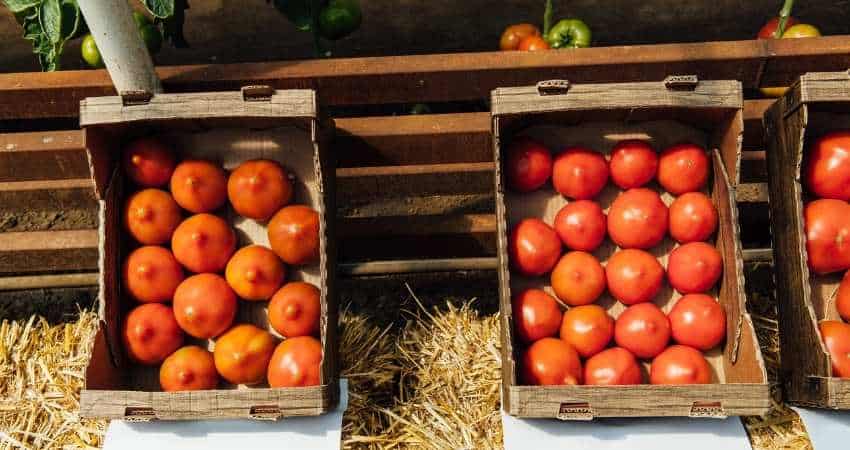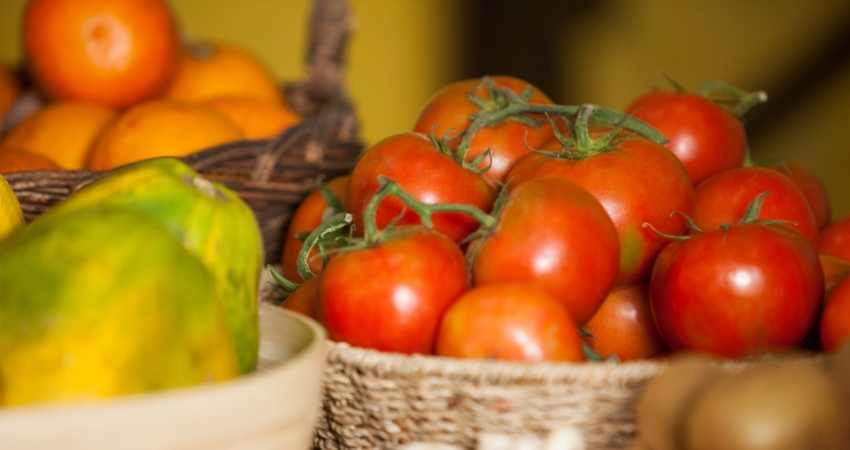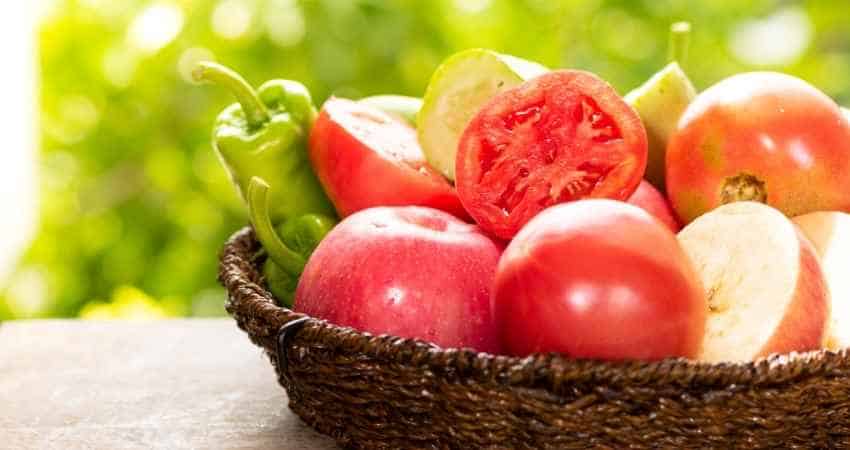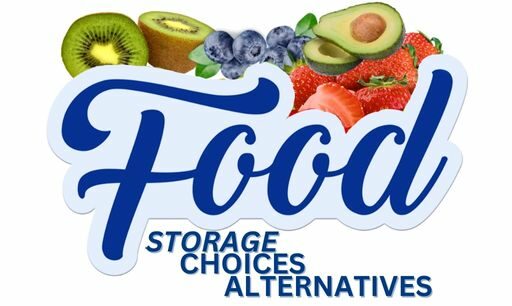Can You Store Tomatoes With Fruit?
Tomatoes also have a reputation of going bad quickly, especially when stored with other fruits.
You can store tomatoes with fruits, but it is advisable to store them alone, especially if you don’t want to fasten the ripening process. Tomatoes, similar to fruits like mangoes, apples, bananas, avocados, and peaches tend to produce ethylene, a gas that promotes ripening in fruits.
Curious to know which fruits can be stored with tomatoes? If so, then read on as we shed more light on the dos and don’ts of storing tomatoes.
Ethylene Gas in Tomatoes
As a Certified Health Coach many clients ask me about food storage including tomatoes. Also, I purchase and consume it every week. Therefore, I have researched this topic in the past and present. Let’s examine the storage methods closely.
Peaches, avocados, bananas, and tomatoes are known for ethylene gas production, which promotes ripening1. This means that when these plants are stored together, the rate of ethylene gas production increases significantly, consequently leading to fastened ripening in these fruits.
However, since ethylene works by reducing chlorophyll levels in plants, you’ll notice that some fruits or vegetables tend to lose their green color when stored with tomatoes2. This can lead to unwanted outcomes, especially when storing green vegetables that aren’t ripe yet.

What Fruits or Vegetables Can Be Stored With Tomatoes?
Storing fruits and vegetables isn’t as straightforward as most of us perceive. If your veggies have been maturing faster than they should, or if you’ve been throwing away several fresh produce, then chances are your storing practices are incorrect.
To keep your vegetables fresh and tasty, you’ll need to separate ethylene producers from ethylene-sensitive fruits or veggies. And since it’s hard to know which fruits or vegetables contain ethylene, we’ve created a small list to help you out.
Below are fruits that produce ethylene to promote ripening:
- Tomatoes
- Plums
- Persimmons
- Pears
- Peaches
- Papayas
- Passion fruit
- Mangoes
- Kiwi
- Cantaloupe
- Ripe bananas
- Avocados
- Apricots
- Apples
The fruits mentioned can be stored together, unless they are sensitive to ethylene. However, the challenge comes in when the ethylene levels produced become too much, leading to premature ripening.
Therefore, to keep your produce in tip-top shape, it is advisable to observe the ripeness. If you want to fasten the ripening process of say avocados, you can add one, two, or three of the fruits mentioned to the basket. However, you’ll need to be extra careful to ensure you don’t allow them to over-ripen.
Fruits or Vegetables That Shouldn’t Be Stored With Tomatoes
Generally, vegetables shouldn’t be stored next to ethylene-producing fruits such as tomatoes3. However tempting it might be, snuggling your tomatoes and mangoes next to your cucumbers, okra, or leafy greens is a recipe for disaster.
Plants high in chlorophyll like unripe bananas, green beans, and broccoli tend to do well when separated from ethylene producing fruits.
Below are some of the vegetables that are sensitive to ethylene-producing fruits and shouldn’t be stored with tomatoes:
- Unripe bananas
- Broccoli
- Belgian endive
- Green beans
- Brussels sprouts
- Cauliflower
- Carrots
- Chard
- Eggplant
- Cucumbers
- Leafy greens
- Parsley
- Okra
- Peas
- Spinach
- Peppers
- Sweet potatoes
- Squash
- Watermelon
So, to increase the shelf life of these products, storing them separately from the likes of tomatoes and apples can go a long way in keeping them fresh and fit for consumption.

Best Ways to Store Tomato
If you want to preserve the flavor and texture, you should consider storing your tomatoes at room temperature. However, tomato storage should depend on whether they are ripe, unripe, or overripe.
Unripe Tomatoes
Unripe tomatoes are usually green and can take several days to ripen. Leaving them to ripen on their own is advisable ((Huffpost: How You Store Your Fruits And Vegetables Might Be Causing Them To Spoil)).
You can also ripen the green tomatoes by placing them in a single layer, either in a cardboard box or paper bag. Remember to put the tomatoes in a cool, dry area until they become red.
Ripe Tomatoes
Dealing with ripe tomatoes can be a bit tricky, especially if stored with other ethylene producers. Ripe tomatoes tend to go stale quickly, and keeping them snuggled with other ethylene-producing fruits is probably not a good idea even though they’re not ethylene sensitive.
Ensure that your ripe tomatoes are stored alone. Also, ripe tomatoes should be stored away from sunlight, without touching one another.
Overripe Tomatoes
While it isn’t advisable to store tomatoes in the fridge, fridge storage is the best option when dealing with overripe tomatoes4.
These tomatoes are soft to the touch and extra red, the chilly fridge environment will help to slow down the process of ripening, allowing your tomatoes to last for a few more days.
You should not keep overripe tomatoes with other tomatoes as this might lead to premature ripening, or excessive ripening, which does little to preserve the flavor and overall freshness.
Can You Store Tomatoes in the Fridge?
Storing tomatoes in the fridge will lead to a loss of firmness and a reduction of flavor. Due to this, it is advisable to store tomatoes at room temperature, especially if you plan to use them within a day or two.
However, if you don’t plan on using the tomatoes within a week, you can store them in the refrigerator.
The chilly fridge environment helps prevent the formation of ethylene, which reduces the ripening process. This means that while your tomatoes might ripen while inside the fridge, they won’t rot as fast as they would if stored at room temperature.
To ensure your tomato regains some of its flavor at the time of consumption, remove it from the fridge and cool for 2-3 hours at room temperature.
And in case you’re interested in long term tomato storage, then the use of a freezer can come in handy5. You can either chop the tomatoes in tiny bits or store them as a whole. However, you’ll need to place them in an airtight bag to preserve both freshness and flavor.
When dealing with frozen tomatoes, it’s advisable to give them several hours to regain flavor before using them in recipes6.

Ways to Speed Up Ripening in Tomatoes
Generally, tomatoes don’t take too long to ripen. But if you want to fasten the process and consume them as soon as possible, consider using the following methods.
Place the Tomatoes in a Cardboard Box
Place newspaper pieces at the bottom of the cardboard before placing the green tomatoes carefully in a single layer. Cover the cardboard with another layer of newspaper and place it in a warm, dry area. You’ll need to check regularly to prevent the tomatoes from over-ripening and rotting.
Place the Tomatoes With Other Ripening Fruits
Placing your green tomatoes with ethylene-producing fruits may speed up the ripening process. Take a ripe banana and apple and place them where you’ve stored your tomato. The increased production of ethylene gas may make the environment conducive enough for ripening the tomatoes.
Although the techniques mentioned can help speed up ripening in tomatoes, it’s advisable to speed up the process when tomatoes start to become yellow. The yellow-orange appearance indicates the tomato is ready to ripen, which ensures they’re flavorsome once they become entirely red.
If you have any questions to ask me about this article don’t hesitate to comment below or email us. You can find an email on our contact page.
Read Next
Can You Store Blueberries and Strawberries Together?
Can You Store Cinnamon in the Fridge?
Can You Store Strawberries and Blackberries Together?
- IEEEXplore: Feature extraction for ethylene gas measurement for ripening fruits [↩]
- Sciencedaily: Chlorophyll [↩]
- Britannica: Is a Tomato a Fruit or a Vegetable? [↩]
- The Washington Post: Ten fruits and vegetables you’re storing wrong [↩]
- Wikihow: How to Store Tomatoes (Long Term) [↩]
- The Spruce Eats: How to Preserve Tomatoes [↩]
